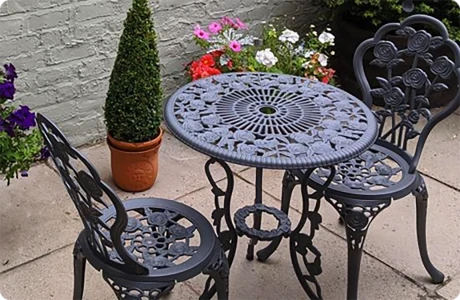Innovative Designs for Cast Iron Products and Applications in Modern Manufacturing
The Art and Science of Cast Iron Designs
Cast iron, a material known for its durability and versatility, has been a cornerstone in various design aspects—from architecture to cookware. Its unique properties and aesthetic appeal have led to a resurgence of interest in cast iron designs, marrying functionality with artistic expression. This article will explore the significance of cast iron as a design material, its historical context, contemporary uses, and the future of cast iron in design.
A Historical Perspective
The origins of cast iron date back to ancient China around 500 BC, where it was primarily used for tools and weapons. By the 18th century, the British Industrial Revolution saw a shift in the utility of cast iron, transitioning into architectural elements. Notable structures like bridges, buildings, and even entire cityscapes began to incorporate cast iron as a primary building material. Its ability to be molded into various shapes made it an ideal choice for decorative elements such as railings, columns, and facades.
As an artistic medium, cast iron has been utilized by various designers and artists. Its inherent characteristics— such as its ability to hold fine detail and withstand harsh conditions—have lent themselves to elaborate sculptures, functional art pieces, and intricate patterns. The aesthetic appeal of cast iron lies not only in its robust nature but also in its capacity to develop a rich patina over time, enhancing its visual intrigue.
The Versatility of Cast Iron in Design
One of the most remarkable aspects of cast iron is its versatility. In the world of architecture, cast iron has been used to create everything from durable and lasting structural components to ornate decorative features. Many historical buildings feature stunning cast iron embellishments that add an element of elegance and craftsmanship to their facades.
In contemporary design, cast iron has found a place in the realm of cookware. The famous cast iron skillet is revered for its heat retention and even cooking properties, emerging as a favorite among chefs and home cooks alike. Beyond the kitchen, cast iron furniture—such as benches, tables, and chairs—exudes a timeless charm, often found in gardens and outdoor spaces.
Moreover, cast iron has made its mark in the industrial design sphere, where its rugged aesthetic aligns perfectly with modern minimalist trends. Items such as light fixtures, wall art, and kitchen tools depicted in cast iron exhibit both functionality and artistic flair. These designs often pay homage to the material's historical significance while embracing modern sensibilities.
cast iron designs

Environmental Considerations
As society increasingly values sustainability, cast iron stands out as an eco-friendly option. Its longevity reduces the need for frequent replacements, and the material can often be recycled. This reputation as a sustainable choice, combined with its historical significance and aesthetic appeal, makes cast iron an attractive option for contemporary designers seeking to blend form, function, and environmental responsibility.
The Future of Cast Iron Designs
As we look toward the future, the potential for innovation in cast iron designs is vast. With advancements in casting techniques and technologies, designers are pushing the boundaries of what is possible with this material. The revival of traditional craftsmanship paired with modern manufacturing processes opens new avenues for creativity and expression in cast iron design.
Additionally, the global trend towards artisanal and handmade products suggests a resurgence in interest in traditional materials like cast iron. As customers become more conscious of the stories and craftsmanship behind their possessions, the value of cast iron as a medium for artistic expression will likely continue to grow.
Furthermore, collaborations between designers, artists, and manufacturers can lead to thoughtful and meaningful cast iron pieces that resonate with consumers. This intersection of art and industry not only preserves the cultural heritage of cast iron but also fuels innovation, ensuring it remains relevant in a fast-evolving design landscape.
Conclusion
Cast iron is more than just a material; it is a canvas for creativity and a testament to human ingenuity. From its historical roots to modern manifestations, cast iron designs continue to captivate and inspire. As we embrace the past while looking toward the future, cast iron holds a promising place in the world of design—a blend of durability, sustainability, and artistic expression that will endure for generations to come.
-
Wrought Iron Components: Timeless Elegance and Structural StrengthNewsJul.28,2025
-
Window Hardware Essentials: Rollers, Handles, and Locking SolutionsNewsJul.28,2025
-
Small Agricultural Processing Machines: Corn Threshers, Cassava Chippers, Grain Peelers & Chaff CuttersNewsJul.28,2025
-
Sliding Rollers: Smooth, Silent, and Built to LastNewsJul.28,2025
-
Cast Iron Stoves: Timeless Heating with Modern EfficiencyNewsJul.28,2025
-
Cast Iron Pipe and Fitting: Durable, Fire-Resistant Solutions for Plumbing and DrainageNewsJul.28,2025
-
 Wrought Iron Components: Timeless Elegance and Structural StrengthJul-28-2025Wrought Iron Components: Timeless Elegance and Structural Strength
Wrought Iron Components: Timeless Elegance and Structural StrengthJul-28-2025Wrought Iron Components: Timeless Elegance and Structural Strength -
 Window Hardware Essentials: Rollers, Handles, and Locking SolutionsJul-28-2025Window Hardware Essentials: Rollers, Handles, and Locking Solutions
Window Hardware Essentials: Rollers, Handles, and Locking SolutionsJul-28-2025Window Hardware Essentials: Rollers, Handles, and Locking Solutions -
 Small Agricultural Processing Machines: Corn Threshers, Cassava Chippers, Grain Peelers & Chaff CuttersJul-28-2025Small Agricultural Processing Machines: Corn Threshers, Cassava Chippers, Grain Peelers & Chaff Cutters
Small Agricultural Processing Machines: Corn Threshers, Cassava Chippers, Grain Peelers & Chaff CuttersJul-28-2025Small Agricultural Processing Machines: Corn Threshers, Cassava Chippers, Grain Peelers & Chaff Cutters












